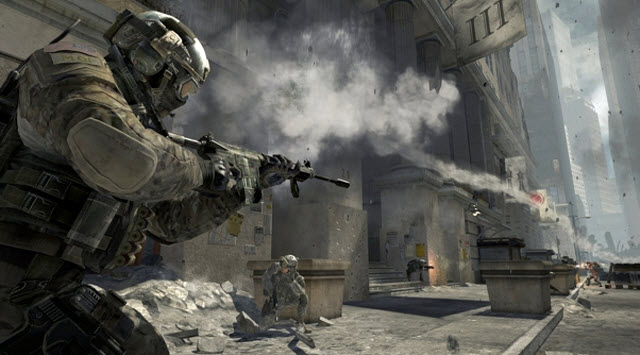
Video game sales crashed 34 percent in January, with total industry sales falling 34 percent to $750.6 million from $1.14 billion a year ago, according to market researcher NPD Group.
[aditude-amp id="flyingcarpet" targeting='{"env":"staging","page_type":"article","post_id":388704,"post_type":"story","post_chan":"none","tags":null,"ai":false,"category":"none","all_categories":"business,games,","session":"C"}']The lousy performance of video game sales in physical retail stores masks what’s really happening as the industry transforms to digital sales, which aren’t captured in the retail numbers. Gamers are shifting their purchases to online, social, and mobile forms of gaming—dubbed digital gaming—while the retail side is shrinking fast. And the growth in digital isn’t quite big enough to offset the shrinking retail numbers.
In January, hardware sales were $199.5 million, down 38 percent from $324.0 million a year ago. Software was $355.9 million, down 38 percent from $576.0 million a year ago. Accessory sales were $195.2 million, down 18 percent from $237.1 million a year ago. In December, hardware sales were down 28 percent while software was down 14 percent.
AI Weekly
The must-read newsletter for AI and Big Data industry written by Khari Johnson, Kyle Wiggers, and Seth Colaner.
Included with VentureBeat Insider and VentureBeat VIP memberships.
Full told, the estimated total consumer spending on games includes physical video and retail games, used games, game rentals, subscriptions, full-game digital downloads, social network games, downloadable content, and mobile games. Not counting hardware, sales were $379.6 million, down 37 percent from $603.2 million a year ago.
Liam Callahan, analyst at the NPD Group, said, “January retail performance experienced steep declines with a lack of software launches, and poor hardware and accessory performance partly related to bad comps from Kinect-related success in January 2011.” A year ago, there were a lot more releases of new video games in January.
He added, “Outside of new physical retail sales, we estimate that the consumer spend on other ways to acquire content including used games, full game and add-on content downloads, social network games, mobile games, rentals and subscriptions accounted for an additional $350 – $400 million in sales. Our final quarterly estimate of the Q1 2012 consumer spend in these areas will be released in our Q1 Games Market Dynamics: U.S.”
David Dennis, spokesman for Microsoft, said that the Xbox 360 had another month as the leader in console sales. The Xbox 360 led U.S. hardware sales for the 13th month in a row, selling 270,000 units in January. Microsoft said it holds 49 percent share of console sales, with the total retail spend on Xbox hitting $301 million.
NPD is working with research company EEDAR to try to come up with more accurate numbers for global digital and physical game sales worldwide. The top-selling game of the month was Call of Duty: Modern Warfare 3 (pictured), which was launched in November and is the top-selling video game of all time.
VentureBeat's mission is to be a digital town square for technical decision-makers to gain knowledge about transformative enterprise technology and transact. Learn More
